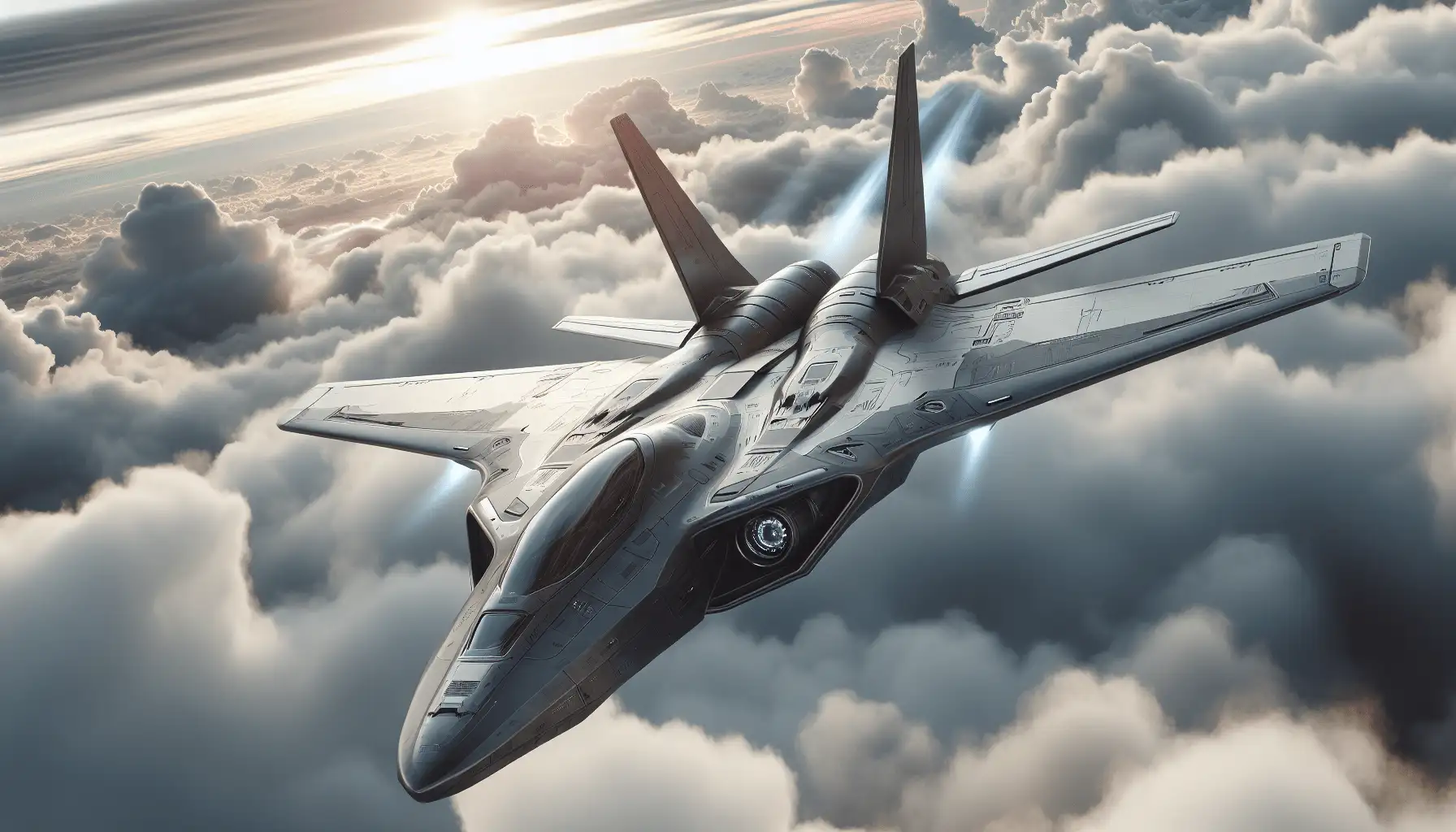Soaring with AI: Futuristic Software Transforming Fighter Jets
Imagine fighter jets that anticipate threats, optimize maneuvers, and even engage in autonomous combat. This isn't science fiction; it's the future of aerial warfare shaped by cutting-edge software. Dive into the world of AI-powered fighter jets and discover the incredible software advancements taking flight.

Introduction
The roar of jet engines and the agility of fighter jets have long symbolized aerial dominance. But the future of combat aviation is not just about powerful engines and skilled pilots. Cutting-edge software is transforming fighter jets into intelligent machines, blurring the lines between pilot and plane. This blog post explores the exciting world of futuristic software integrated into fighter jets, unveiling how AI is revolutionizing aerial warfare.
Cognitive Decision-Making: The Pilot's AI Copilot
Imagine a software system that analyzes vast amounts of data in real-time, calculates optimal flight paths, and even suggests tactical maneuvers. This is the future of cognitive decision-making in fighter jets. AI-powered software will act as a co-pilot, constantly monitoring threats, assessing enemy capabilities, and suggesting the most effective course of action. This frees up precious mental space for the pilot, allowing them to focus on high-level strategy and command decisions.
For instance, an AI system could analyze incoming radar data, identify potential missile threats, and recommend evasive maneuvers. It could also access and interpret real-time intelligence feeds, providing pilots with a comprehensive picture of the battlefield and potential enemy movements. This enhanced decision-making translates to faster reactions, improved situational awareness, and ultimately, a greater chance of mission success.
Enhanced Situational Awareness: Seeing the Battlefield in New Dimensions
Modern fighter jets are equipped with a plethora of sensors, generating a constant stream of data. However, processing and interpreting this information overload can be overwhelming for pilots. This is where AI comes in. Futuristic software will act as a filter, sifting through sensor data and presenting pilots with a clear, actionable picture of the battlefield.
Imagine a system that merges radar data with infrared imagery, highlighting potential threats and friendly forces on a heads-up display. AI could also analyze enemy communication channels, providing real-time insights into their plans and movements. This 360-degree view of the battlefield empowers pilots to make informed decisions with greater situational awareness.
Autonomous Maneuvering: Pushing the Limits of Flight
Fighter jets are marvels of engineering, capable of performing breathtaking maneuvers. However, human pilots have limitations, especially when subjected to G-forces and high-stress combat situations. Enter autonomous maneuvering software. This technology will push the boundaries of flight, allowing fighter jets to perform complex maneuvers with unmatched precision and efficiency.
Imagine a software system that can take control of the aircraft during high-G maneuvers, ensuring optimal performance while protecting the pilot from G-induced loss of consciousness. This technology could also enable automated dogfighting tactics, allowing fighter jets to outmaneuver and outpace enemy aircraft with superhuman agility.
It's important to note that autonomous flight does not necessarily mean pilotless aircraft. In the foreseeable future, AI will likely work in conjunction with human pilots, taking over control for specific tasks or during high-stress situations.
Next-Gen Weapon Systems: Precision and Automation
The future of aerial combat is not just about flying faster and maneuvering better. It's also about delivering ordnance with pinpoint accuracy. AI-powered software will revolutionize weapon systems in fighter jets, facilitating precision targeting and even enabling some degree of autonomous combat.
Imagine a system that automatically locks onto targets, factoring in factors like wind speed, distance, and aircraft movement for guaranteed hits. AI could also be used for weapon selection, suggesting the most effective weapon for a particular target based on its characteristics and mission objectives.
Ethical considerations regarding autonomous weapons are a crucial aspect of this development. International regulations and clear guidelines will be needed to ensure responsible use of this technology.
The Future of AI-Powered Fighter Jets: The Sky's Not the Limit
The integration of AI in fighter jets represents a significant leap forward in aerial warfare. But this is just the beginning. The future holds even more exciting possibilities:
Swarm Intelligence
Imagine a squadron of fighter jets working together as a cohesive unit, with AI coordinating maneuvers and tactics for maximum effectiveness. This concept, known as swarm intelligence, could revolutionize air combat strategies.
Cyberwarfare Integration
Fighter jets of the future might be equipped with software capable of launching cyberattacks or defending against them. This integration could blur the lines between traditional aerial combat and electronic warfare.
Self-Learning and Adaptability
AI systems in fighter jets could be designed to learn from experience, constantly adapting their tactics and decision-making based on real-world encounters. This would create a new level of unpredictability and adaptability for air forces.
Challenges and Considerations
While AI offers immense potential, there are challenges to consider:
Security Risks
Mitigating the risk of cyberattacks on AI-powered fighter jets is crucial. Robust safeguards will be needed to prevent hostile actors from taking control of these sophisticated systems.
Human-Machine Interface
Ensuring seamless and intuitive interaction between pilots and AI is essential. The future lies in developing user interfaces that empower pilots while leveraging the power of AI.
Ethical Concerns
As mentioned earlier, the development of autonomous weapons raises significant ethical concerns. Clear international regulations and responsible use of this technology are paramount.
Conclusion
The future of aerial combat is taking flight with the integration of AI in fighter jets. From intelligent decision-making to autonomous maneuvering, these advancements promise to revolutionize the way wars are fought in the skies. However, it's crucial to address the challenges and ethical considerations that come with this powerful technology. As we move forward, AI in fighter jets has the potential to enhance pilot capabilities, improve mission effectiveness, and ultimately, shape the future of airpower.